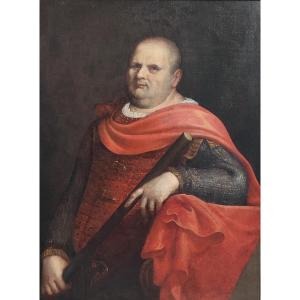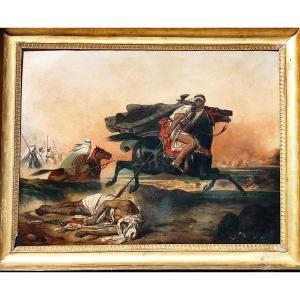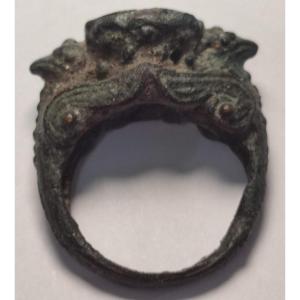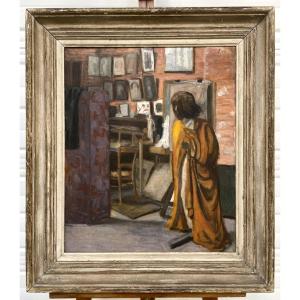oil on canvas, 76x102 cm within a contemporary golden frame
This is the case in which it is appropriate to introduce the oil on canvas under examination, the find that is being reviewed, proposing in a beautiful but somewhat distressed contemporary golden frame, Salome, Herodias and Herod with the head of the Baptist, seated as customers at a table and surrounded by other figures capable of transfiguring a 17th century Neapolitan tavern into the king's palace, starting from some biographical notes of the more than undoubted author, for the clues that can be drawn regarding his "doing". A painting which therefore recalls, in its sometimes somewhat hasty conduct as befits a preparatory study perhaps of a larger format, a specific situation and its pictorial culture, an irrefutable linguistic orientation, given the indisputable presence of an author well known. In fact, the work undoubtedly belongs to Carlo Sellitto (1580-1614), the artist who was among the first to absorb the lesson of Caravaggio in the Neapolitan area, as demonstrated in the painting which is the subject of these critical notes. The artistic scenario in which he was formed and made his debut - we must therefore say - roughly corresponds to that moment and that climate of transition between a late manner and the new naturalism which, between the last remnant of the sixteenth century and the early seventeenth century, will finally have its his standard bearer in Caravaggio. Precisely in this impasse, our painter finds himself, but in the balance, whose identity corresponds in the century to the name of Carlo Infantino, otherwise known as Carlo Sellitto for having adopted, as much as his father Sebastiano, a painter and gilder originally from Montemurro ( Potenza), the matrilineal surname of the Sellitto family.

































 Le Magazine de PROANTIC
Le Magazine de PROANTIC TRÉSORS Magazine
TRÉSORS Magazine Rivista Artiquariato
Rivista Artiquariato